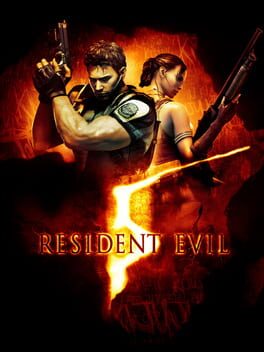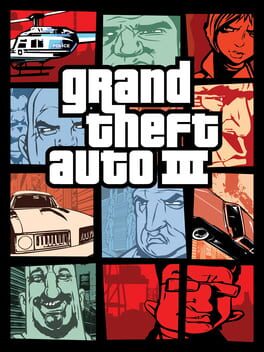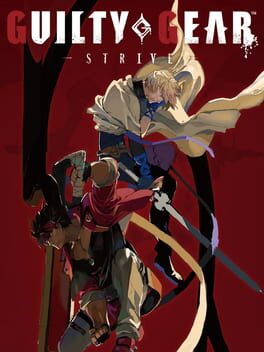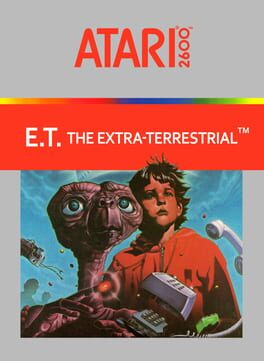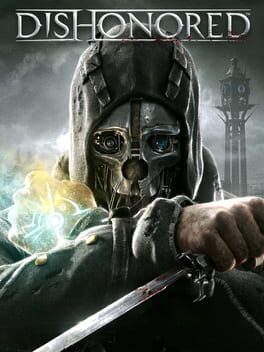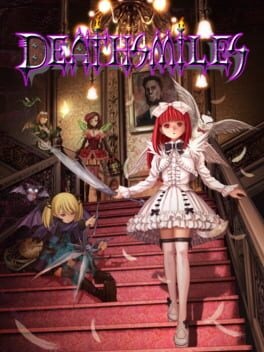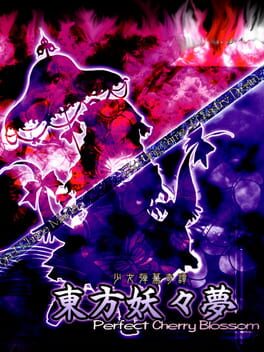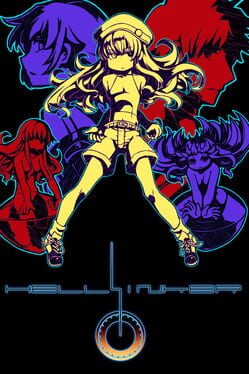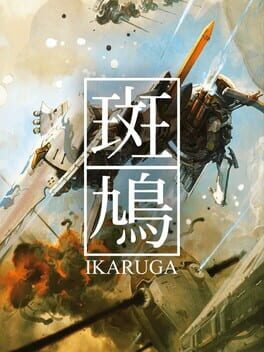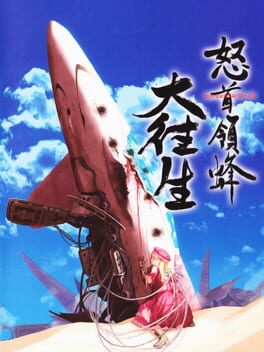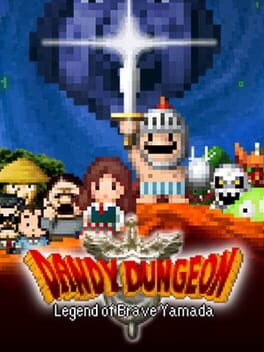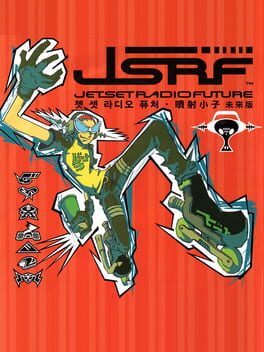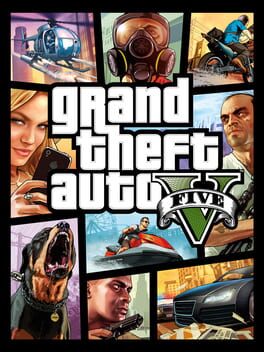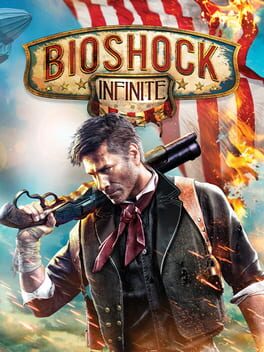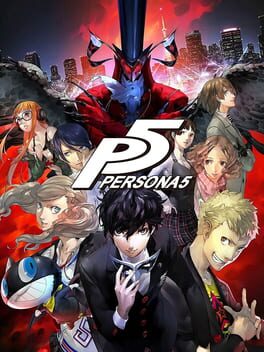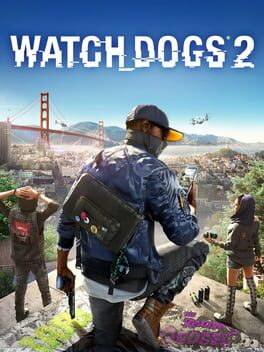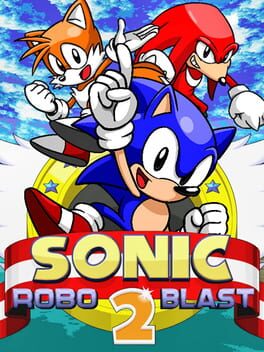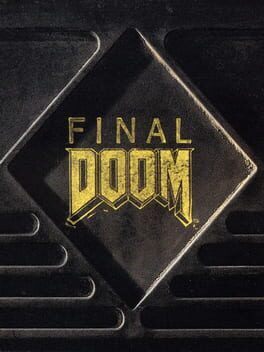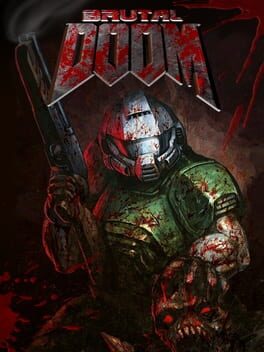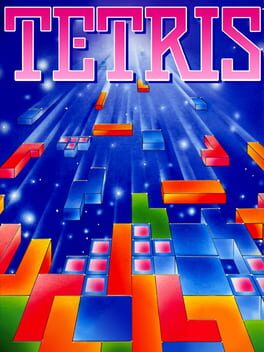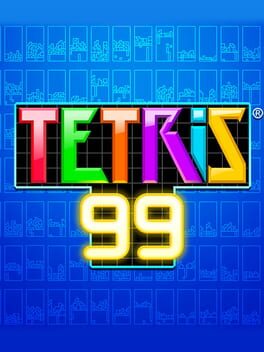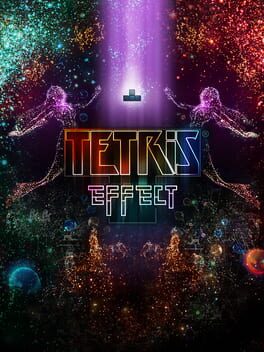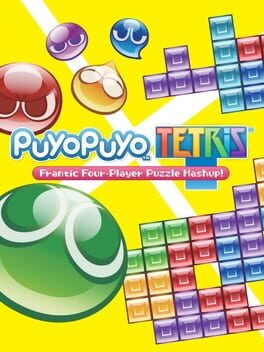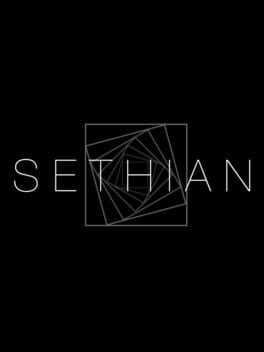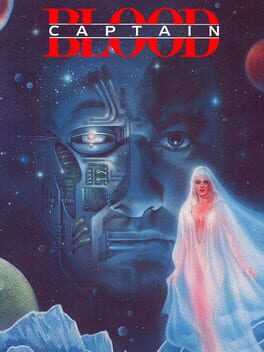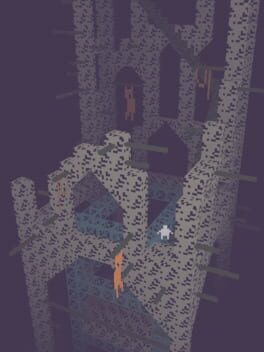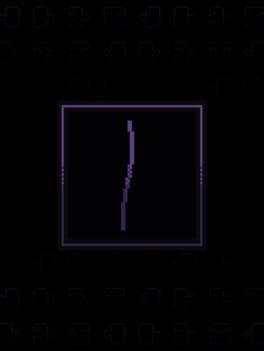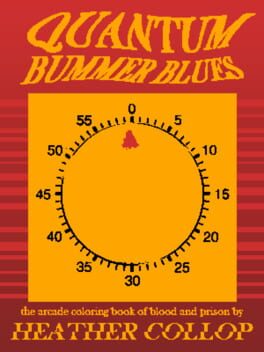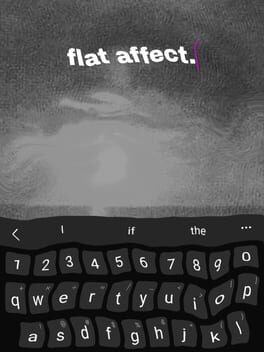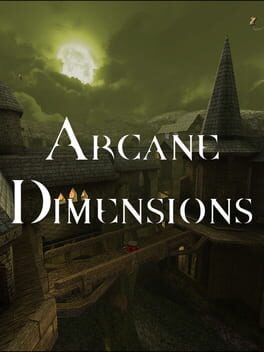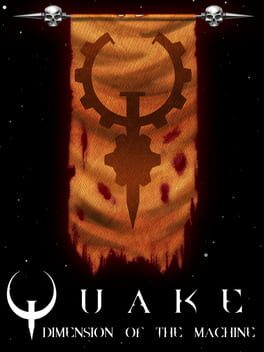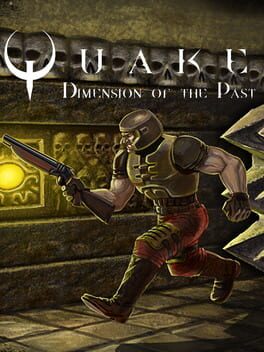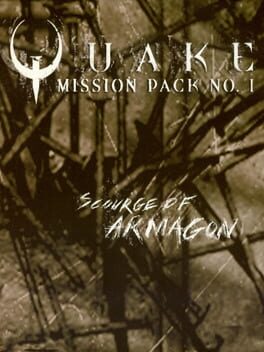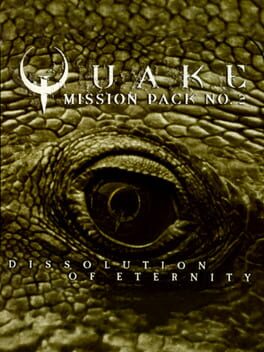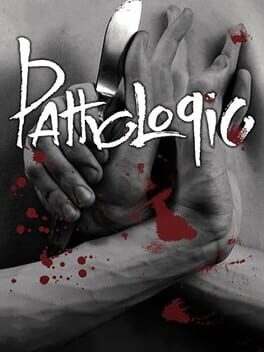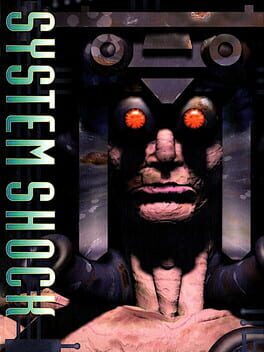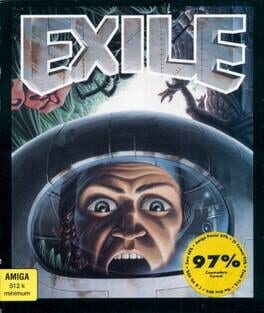248 reviews liked by najio
Resident Evil 5
2009
Normally, thinking about a sequel to Resident Evil 4 is thinking it to be as simple as copying the system again and being done, how could a bad game come out of there? Even better, smooth the system to focus on combat: more melee options and dynamic inventory management limited on what's important without stopping the action.
Turns out that it was also important to know how to design and place enemies and scenarios, to be put against the ropes depended not only on the system but in always feeling surrounded and having to reposition constantly. Because of this, Resident Evil 5 starts by looking at some of the best ideas of 4, the moment inspired by the first raid at the village appears shortly in an open survival arena where enemies will keep appearing. Obviously, it's a highlight, nothing more is needed to feel constantly cornered.
The way is lost at every other moment. Whether it's trying to take advantage of splitting up and covering your backs in co-op, fighting in a cramped incinerator against a monster almost immune to gunfire, or navigating the dark of the mines, the game doesn't come even close to the tension of its predecessor. On top of that, the slapstick tone is much more blurred, seeming almost accidental, as in the possibility to melee combo some enemies together with your partner. Casual exceptions aside, the hits have lost impact and the cinematography style, there is an identity crisis due to a mishmash of trends of the period between military shooter, giant aliens from Gears of War and Matrix scenes that do not fit at all with what Resident Evil 4 was. It seems that it wasn't as simple as replicating a system and hoping that everything else could hold up.
It's no surprise then that the best part is the mercenaries mode. If Resident Evil 5 looks at the village raid to build its best moment right out of the gate, it can also look at the mercenaries mode derived from that sequence. Here disappears the clumsiness of trying to confusingly replicate without understanding and without genius. It goes the roughest way, to survive enemy waves in the system that could not fail, even with the Frankenstein erratic mashups still well in sight.
Turns out that it was also important to know how to design and place enemies and scenarios, to be put against the ropes depended not only on the system but in always feeling surrounded and having to reposition constantly. Because of this, Resident Evil 5 starts by looking at some of the best ideas of 4, the moment inspired by the first raid at the village appears shortly in an open survival arena where enemies will keep appearing. Obviously, it's a highlight, nothing more is needed to feel constantly cornered.
The way is lost at every other moment. Whether it's trying to take advantage of splitting up and covering your backs in co-op, fighting in a cramped incinerator against a monster almost immune to gunfire, or navigating the dark of the mines, the game doesn't come even close to the tension of its predecessor. On top of that, the slapstick tone is much more blurred, seeming almost accidental, as in the possibility to melee combo some enemies together with your partner. Casual exceptions aside, the hits have lost impact and the cinematography style, there is an identity crisis due to a mishmash of trends of the period between military shooter, giant aliens from Gears of War and Matrix scenes that do not fit at all with what Resident Evil 4 was. It seems that it wasn't as simple as replicating a system and hoping that everything else could hold up.
It's no surprise then that the best part is the mercenaries mode. If Resident Evil 5 looks at the village raid to build its best moment right out of the gate, it can also look at the mercenaries mode derived from that sequence. Here disappears the clumsiness of trying to confusingly replicate without understanding and without genius. It goes the roughest way, to survive enemy waves in the system that could not fail, even with the Frankenstein erratic mashups still well in sight.
Grand Theft Auto III
2001
https://www.youtube.com/watch?v=Q6qUB13LTTc
also vividly remember the kid at my elementary school who told me about the word "shit" loving the Shit out of this game back around 2003 and i was fascinated by his descriptions of what could take place in it. probably better than mostSony Computer Entertainment Incorporated Sony Interactive Entertainment LLC works from the past 6-7 or so years, which are just barely-evolved versions of what DMA design was cooking up here and a little bit earlier with space station silicon valley on the n64. i usually get pretty bored about halfway in every time i've played, and just end up driving around liberty city listening to some mad tunes from the legendary moving shadow records or some dubs mixed by the scientist over at king tubby's (rip) studio. that's pretty much the case with every subsequent game in this series, but with different music, actually.
also vividly remember the kid at my elementary school who told me about the word "shit" loving the Shit out of this game back around 2003 and i was fascinated by his descriptions of what could take place in it. probably better than most
Earlier this year, I played most Armored Core bar the PS3 games in anticipation for this game, though not really out of pure hype, but because I was curious what bedrock of design From Software was working with. I didn’t expect to like them much, as I'm not a big mecha fan and I rarely hear high praise for its gameplay, but I was pleasantly surprised. Armored Core had a great niche in which fast movement did not mean great flexibility. You can boost around at high speeds, but your ability to turn and aim is limited by your mech’s legs and your FCS Lockbox. It was an incredibly compelling way to design a console shooter in which traditional aiming was not the main skill, but instead the usage of movement and positioning to supplement your limited tank controls was heavily emphasized. It tickled a very different part of the brain than most games usually do, and this is not without getting into how deep and detailed the mech-building was and the way in which it very directly affected how you control and move with your AC.
I felt very positive towards Oldgen AC as a whole in spite of some issues with mission design, but I also felt like there was no chance FromSoft could replicate any of this. The core conceit of the system after all was limited and unintuitive controls. Without it, none of this would work, and in the year of our lord 2023 we’ve already had a couple releases whos primary objective to sand off anything awkward to the modern gamer even if it leaves glaring flaws in the design (looking at you, Resident Evil 4 Remake) so I prepared myself for Armored Core 6 to not really reach those same heights.
Having played it now, I can call it decent as a brainless mecha-themed action game, though only decent, as even on those metrics it is greatly brought down by poor balancing and some core mechanic weaknesses. It had cool spectacle, and the music was occasionally good, and the plot had enough intrigue going on with answerable questions if you cared to find hidden data logs. The challenge that some bosses give at the beginning was interesting, and I particularly liked the Ibis Chapter 4 boss, who moved too fast to brainlessly shoot at, demanding you wait for openings and keep closing the distance to make sure your shots don't ricochet. Though unfortunately that challenge faded and never returned, even as I completed the supposedly extra difficult content of NG++ and attempted to nerf my own builds to allow the game to shine more while it had the chance, and FromSoft missed the chance of fix Armored Core’s long standing issue of boring mission design, which in some ways is made even worse as they are all made much shorter and less demanding and ammo/repair costs feeling like a complete non-factor to the mission gameplay thus failing to incentivize you to play around saving costs.
The game’s greatest virtue in my opinion is the mech creation sandbox and how much flexibility you have with the ability to place numerous decals anywhere and change the material type of the different metals all over the mech. You can create some very beautifully rendered custom mecha in this game and it makes it easy to get attached to your particular creation if you put some effort into them, and I think that alone can definitely carry a playthrough of this game. However, that about sums up all the nice things I have to say about the game. The actual gameplay suffers and does not justify replaying the game three times to see all the content, and that's what the rest of this review will be dedicated towards.
One of the core issues that hurts this game’s vision is the Stagger system. It acts like a simplified but more extreme version of the Heat mechanic from the older games, however the changes made to it hurt the game’s balance severely. Armored Core 6 rewards the player exponentially for adopting a burst damage based playstyle, often turning fights into complete stomps in favor of the player once you put on a shotgun or grenade launcher. In contrast, anything that doesn't include some form of burst feels heavily undertuned and weak, try playing assault rifles in this game and you will have a bad time for multiple reasons. The issue is twofold here and I will be using it to segue into my other issue with the game’s design.
Stagger leaves the enemy open to critical damage for a small window, and so in order to take advantage of that window, some kind of burst damage is sorely needed. Building Stagger bar itself is also primarily dependent on the damage being dealt, and this makes it so slow damage over time weapons often are bad at causing stagger too, whereas burst damage options will both inflict Stagger very fast while also allowing you deal massive amounts of damage during the window. Finding a build that allows you to take advantage of the stagger system to a reasonable degree while also not completely invalidating the enemies is a far far more challenging task than anything in the game itself. But why balance it like this? Why are Shotguns so obscenely strong?? I suspect the answer to that lies in them being carryovers from Old AC design without much consideration put into how their power changes when the core limitations of tank controls were removed.
In Old-Gen AC, options like a shotgun or a stationary rockets/grenades were much harder to line up the shot for due to the nature of tank controls and FCS. This especially was felt with Shotguns, which demanded you to stick up close to an enemy to get worthwhile damage, which in Oldgen this meant that you were consciously moving into a range where you cannot track your target very well as they can move much faster than you can turn around to chase them, and thus lining up the shot properly took a lot of skill and finesse. Your movement needed to make up for your limited turning and made it so your ability to deal high damage was highly reliant on moving in smart ways, but this conflicted with the demands brought on by needing to dodge enemy attacks and keep yourself out of their sights. This created an incredibly complex dance of challenging priorities that made the high damage feel earned once you manage to land the shots.
However, in the world of Armored Core 6, the mechs are blessed with hard-lock auto aim and insta turning around, nearly all your shots will land, the negligible drawbacks of hard-lock are not felt whatsoever in PvE and the game’s much too stationary bosses. Your movement rarely needs to take into account your ability to land shots, just do whatever it takes to dodge the enemy’s telegraphed cannons and stay close while spamming the shoot buttons.
The assault rifles and other long/mid range options still had a strong place in Old Gen because in order to track targets within your lockbox, you had to keep a certain distance that made their movement manageable, allowing them to be good ways to chip away at enemies with ease. In comparison, AC6 gives you no reason to ever be far from opponents. With the increased power of laser blades, the addition of assault boost kicks, and the bosses who constantly dash up to you for Souls-like melee attacks, there is nearly never a reason to play long/mid range. You need to stay close to even dodge most boss attacks which ask you to hover over them and/or dash past them. It’s telling that most FCS given to you are close-range focused and that Sniper Rifles didn’t even make it into this game.
I find these flaws to be the result of the sacrifices made by the game for the sake of ultra-intuitive controls, but when you take away the entire skill of aiming and the movement, positioning, and weapon balancing factors that come with it, issues like this are bound to bubble up. It's also because of this that none of the mech types really feel as different as they used to, with the controls homogenized the way they are, many of the drawbacks and strengths of different mech-types are not as apparent. Of course the flipside of this is you can now bring a tank leg into any kind of fight you want, whereas Oldgen AC tended to railroad you into making a fast AC if you wanted to deal with its endgame challenges. But unlike this game, Oldgen AC often still had a lot of bite and challenge left to it even when you develop an AC that has the right tools for the mission. That isn’t to say that you can’t cheese difficult fights and challenges with some broken weapons/setups, but you had to go out of your way to make them and most challenges feel beatable without a cheese build, you just need the skills to push yourself over the finish lines. The demands of the build were only one half of the puzzle, but playing well enough to beat challenges was even more emphasized, which I don’t find be the case in Armored Core 6 as the “right build” is both even easier to make and once created, utterly destroys any challenge and doesn’t let me have any fun with the boss. Perhaps this is great for the type of player who likes the power-fantasy of crushing infamous Souls bosses by changing their build, but I was never that kind of player and even if I was, the relative ease and simplicity at which you can create a build that dominates all this game’s content makes even that part of the game unsatisfying in concept.
It's hard to look at the game in a good light after three playthroughs, with the flaws in the game’s balancing and the limited depth of its systems becoming more apparent as I attempted to find ways to make the game challenging. This a game where you never need to worry about anything but dodging once you’re locked on and while yes, the ways in which you dodge in this game are definitely more fun than Souls i-framing, dashing over forward moving attacks that every boss spams is not enough to make me fall love in with a game, especially not with the vast majority of missions being some flavor of “boring” with how little they demand of any of the systems in place. At the very least I hope the way this game introduces mech-building can serve as a nice way to ease players into the older games.
I felt very positive towards Oldgen AC as a whole in spite of some issues with mission design, but I also felt like there was no chance FromSoft could replicate any of this. The core conceit of the system after all was limited and unintuitive controls. Without it, none of this would work, and in the year of our lord 2023 we’ve already had a couple releases whos primary objective to sand off anything awkward to the modern gamer even if it leaves glaring flaws in the design (looking at you, Resident Evil 4 Remake) so I prepared myself for Armored Core 6 to not really reach those same heights.
Having played it now, I can call it decent as a brainless mecha-themed action game, though only decent, as even on those metrics it is greatly brought down by poor balancing and some core mechanic weaknesses. It had cool spectacle, and the music was occasionally good, and the plot had enough intrigue going on with answerable questions if you cared to find hidden data logs. The challenge that some bosses give at the beginning was interesting, and I particularly liked the Ibis Chapter 4 boss, who moved too fast to brainlessly shoot at, demanding you wait for openings and keep closing the distance to make sure your shots don't ricochet. Though unfortunately that challenge faded and never returned, even as I completed the supposedly extra difficult content of NG++ and attempted to nerf my own builds to allow the game to shine more while it had the chance, and FromSoft missed the chance of fix Armored Core’s long standing issue of boring mission design, which in some ways is made even worse as they are all made much shorter and less demanding and ammo/repair costs feeling like a complete non-factor to the mission gameplay thus failing to incentivize you to play around saving costs.
The game’s greatest virtue in my opinion is the mech creation sandbox and how much flexibility you have with the ability to place numerous decals anywhere and change the material type of the different metals all over the mech. You can create some very beautifully rendered custom mecha in this game and it makes it easy to get attached to your particular creation if you put some effort into them, and I think that alone can definitely carry a playthrough of this game. However, that about sums up all the nice things I have to say about the game. The actual gameplay suffers and does not justify replaying the game three times to see all the content, and that's what the rest of this review will be dedicated towards.
One of the core issues that hurts this game’s vision is the Stagger system. It acts like a simplified but more extreme version of the Heat mechanic from the older games, however the changes made to it hurt the game’s balance severely. Armored Core 6 rewards the player exponentially for adopting a burst damage based playstyle, often turning fights into complete stomps in favor of the player once you put on a shotgun or grenade launcher. In contrast, anything that doesn't include some form of burst feels heavily undertuned and weak, try playing assault rifles in this game and you will have a bad time for multiple reasons. The issue is twofold here and I will be using it to segue into my other issue with the game’s design.
Stagger leaves the enemy open to critical damage for a small window, and so in order to take advantage of that window, some kind of burst damage is sorely needed. Building Stagger bar itself is also primarily dependent on the damage being dealt, and this makes it so slow damage over time weapons often are bad at causing stagger too, whereas burst damage options will both inflict Stagger very fast while also allowing you deal massive amounts of damage during the window. Finding a build that allows you to take advantage of the stagger system to a reasonable degree while also not completely invalidating the enemies is a far far more challenging task than anything in the game itself. But why balance it like this? Why are Shotguns so obscenely strong?? I suspect the answer to that lies in them being carryovers from Old AC design without much consideration put into how their power changes when the core limitations of tank controls were removed.
In Old-Gen AC, options like a shotgun or a stationary rockets/grenades were much harder to line up the shot for due to the nature of tank controls and FCS. This especially was felt with Shotguns, which demanded you to stick up close to an enemy to get worthwhile damage, which in Oldgen this meant that you were consciously moving into a range where you cannot track your target very well as they can move much faster than you can turn around to chase them, and thus lining up the shot properly took a lot of skill and finesse. Your movement needed to make up for your limited turning and made it so your ability to deal high damage was highly reliant on moving in smart ways, but this conflicted with the demands brought on by needing to dodge enemy attacks and keep yourself out of their sights. This created an incredibly complex dance of challenging priorities that made the high damage feel earned once you manage to land the shots.
However, in the world of Armored Core 6, the mechs are blessed with hard-lock auto aim and insta turning around, nearly all your shots will land, the negligible drawbacks of hard-lock are not felt whatsoever in PvE and the game’s much too stationary bosses. Your movement rarely needs to take into account your ability to land shots, just do whatever it takes to dodge the enemy’s telegraphed cannons and stay close while spamming the shoot buttons.
The assault rifles and other long/mid range options still had a strong place in Old Gen because in order to track targets within your lockbox, you had to keep a certain distance that made their movement manageable, allowing them to be good ways to chip away at enemies with ease. In comparison, AC6 gives you no reason to ever be far from opponents. With the increased power of laser blades, the addition of assault boost kicks, and the bosses who constantly dash up to you for Souls-like melee attacks, there is nearly never a reason to play long/mid range. You need to stay close to even dodge most boss attacks which ask you to hover over them and/or dash past them. It’s telling that most FCS given to you are close-range focused and that Sniper Rifles didn’t even make it into this game.
I find these flaws to be the result of the sacrifices made by the game for the sake of ultra-intuitive controls, but when you take away the entire skill of aiming and the movement, positioning, and weapon balancing factors that come with it, issues like this are bound to bubble up. It's also because of this that none of the mech types really feel as different as they used to, with the controls homogenized the way they are, many of the drawbacks and strengths of different mech-types are not as apparent. Of course the flipside of this is you can now bring a tank leg into any kind of fight you want, whereas Oldgen AC tended to railroad you into making a fast AC if you wanted to deal with its endgame challenges. But unlike this game, Oldgen AC often still had a lot of bite and challenge left to it even when you develop an AC that has the right tools for the mission. That isn’t to say that you can’t cheese difficult fights and challenges with some broken weapons/setups, but you had to go out of your way to make them and most challenges feel beatable without a cheese build, you just need the skills to push yourself over the finish lines. The demands of the build were only one half of the puzzle, but playing well enough to beat challenges was even more emphasized, which I don’t find be the case in Armored Core 6 as the “right build” is both even easier to make and once created, utterly destroys any challenge and doesn’t let me have any fun with the boss. Perhaps this is great for the type of player who likes the power-fantasy of crushing infamous Souls bosses by changing their build, but I was never that kind of player and even if I was, the relative ease and simplicity at which you can create a build that dominates all this game’s content makes even that part of the game unsatisfying in concept.
It's hard to look at the game in a good light after three playthroughs, with the flaws in the game’s balancing and the limited depth of its systems becoming more apparent as I attempted to find ways to make the game challenging. This a game where you never need to worry about anything but dodging once you’re locked on and while yes, the ways in which you dodge in this game are definitely more fun than Souls i-framing, dashing over forward moving attacks that every boss spams is not enough to make me fall love in with a game, especially not with the vast majority of missions being some flavor of “boring” with how little they demand of any of the systems in place. At the very least I hope the way this game introduces mech-building can serve as a nice way to ease players into the older games.
Guilty Gear: Strive
2021
I find it kinda hard to put my own opinion on Strive in an interesting way. I’d say “it's an alright but janky not-anime-fighter” with some wack mechanics and occasionally cool kits. I see it as the kind of game that won’t be many people’s favorite due to how many compromises it makes in the attempt to be accessible and expansive at the same time, pulling mechanics from all across fighting game sub-genres to do a little bit of everything. It’s far more interesting for me to think about what it represents culturally and what the game is trying to do with the FGC.
When the game was first revealed as the unnamed new Guilty Gear, it’s creator said in an interview that the game was meant to be a “bridge that connects people”. I took it as a corny exaggeration that's just meant to communicate that “its an accessible fighter”, but a couple months from launch now, I see how much the devs really tried to make true on that message and how much the game, in spite of its rocky launch and somewhat negative perception, managed to succeed at it.
Since its launch, Strive has been the talk of town for the FGC in a way that extends beyond the fad of a new release. Look at major tournaments and you will find the players that are pros and legends from across different fighting games. I never thought I’d see the Zangief legend “SnakeEyez” go toe-to-toe with Guilty Gear vets and Marvel players, transferring all his SF grappler experience into Potemkin and taking advantage of the GG systems in ways I haven’t seen GG players do, but here we are. Within my personal circle I saw friends who had always been waiting for a fighting game to break into and this game finally became the one to get them to feel competent and comfortable with the genre, and people who never ventured outside their niche of Tekken or Street Fighter gaining a taste for new gameplay styles through this game. Daisuke wasn’t talking out of his ass after all.
It’s main virtue is having a combo of elements that makes it easy to introduce to most people without having to put asterisks, which somehow no FG has managed to do in the past decade. These are:
A. Look Pretty
B. Have Good Netcode
C. Be Easy To Pick Up
And
D. Have A Playerbase.
No fighter in the last decade has managed to get all of these right to achieve proper flagship status. If you have good netcode you’re probably an inaccessible anime fighter or something on fightcade, you also don’t have a playerbase. If you have a playerbase you’re probably Tekken, Street Fighter, or DBFZ, which all have their own set of problems that stop them from being a flagship for the community. Strive did have terrible SFV-esque server issues on launch and still suffers from its lobby system which I think is the only place where it fucked up in this department of approachability, but otherwise these elements make it an easy game to get someone into as it won't be difficult for them to learn, they will be able to play against you regardless of regional distance, and they will have an ample playerbase and an active community to work with.
The other way in which Strive tries to bridge people is in its mechanics, and that’s where the game gets a little contentious. It prioritizes presenting a large variety of scenarios and archetypes in easy to understand ways, using high damage for strong feedback. Knowledge and execution walls are made much smaller and this comes at the price of much of what people liked about the older games. Stuff like every character being designed to only need to learn one easy BnB to execute their gameplan, and slowdown on counter hits to let anyone hit confirm, go a long way to allowing anyone to get to competency fairly quickly, but those who wanted their lab playground won’t get it here.
Changes are made to make its neutral and offense more Street Fighter like while keeping a distinctly Guilty Gear defense. A slower airdash encourages more grounded play without eliminating air footsies, the redesigned gatling system seeks to emulate SF’s risk/reward structure while keeping anime delay cancel pressure, and initially the game seemed to take cues from SFV in the lack of chip kills before that was patched out. The changes to its character kits lead to a lot less high/low or left/right and a lot more hit/throw which is a far simpler mixup to understand, execute, and defend against. Despite that, defense still focuses on up-back air blocking, using FD and meter correctly,
The experimental ways in which it tries to bridge SF and GG’s gameplay styles lead to a lot of jank. The unintuitive nature of its new gatling system receives flak for good reason, its airdash feels much worse than anything you played before, and the design philosophy seems a bit all over the place with how some hitboxes and kits are designed, leading to large power disparities like Sol vs Ky which feels like a barely toned down Guilty Gear character fighting a mediocre Street Fighter character.
The game’s throw is probably the most problematic result to me, with SFV-esque high reward and range but anime-style fast startup that beats normals. Usually fast/strong throws are incredibly short ranged but Strive is the only game I know that doesn’t do this, and combined with its character kits and the fact that throws put you in counter state on whiff, lead the game to a highly volatile throw-based meta that focuses on static 50/50s far too often. I find it hard to look at the game’s current state without feeling that it needed another pass of mechanical polish before launch.
Some changes are, however, more generally enjoyed: universal wake up timings, character weights that don't affect combos as drastically, and mapping multiple mechanics to the Roman Cancel input to have them activate depending on context instead of using unique inputs for context sensitive moves like in previous games (e.g Dead Angle).
RC mechanics are, in general, where the game almost succeeds at having its cake and eating it too. The creators claimed that they wanted to make things easier to understand yet “retain the depth” somehow, and there are some really admirable attempts where nuance is added in inventive ways that make things easier while also deeper.
The new Red-RC allows players to convert off of any attack with ease and use the staple mechanic for its intended purpose without grinding conversions from every possible situation. A new drift system that gives RCs new neutral, mixup, and combo possibilities, and the ability to cancel the slowdown to RCs allows players to have both Xrd RCs and +R style fast RCs.
These new systems are highly praised for a good reason, but a common criticism of it is that game locks too much of its depth behind a metered mechanic (in a game where you can only hold two stocks of meter at most too), meaning that the times you can be creative and crazy in the way old Guilty Gear used to be are limited to but a few instances per game. However, this criticism is probably seen as a success by the devs when thinking about it from their “bridge” point of view. The game lets you play with more classic neutral and mixup structures, but the RC system gives you a lens into more complex movements akin to crazier anime fighters. It allows you to taste the potential depth without having it take over the game and turn it into something too unorthodox and based around RC gimmicks.
This general philosophy is why I think that even when this game is all patched and polished up, it likely won’t stick as anyone’s favorite fighter, as it constantly refuses to indulge in a strong niche. I like my specialized games that revel in their niche, and overall have never been a big fan of Guilty Gear’s lab-heavy execution wall and oki focused gameplans, so I thought I personally wouldn’t get much out of Strive.
However, they succeeded at appealing to me with the design of Zato. I think he is one of the few cases in this game of a character that actually managed to retain his depth while also becoming easier, and they did not do this through removing mechanics, but instead opted to add new ones on top of the existing template.
Clap cancels and redesigned summon moves allow Zato insane possibilities he didn’t even dream of before, while simultaneously making him easier to pick up. But they did not, as most predicted before release, opt to remove his old mechanic, and thus allowed you to layer his classic Negative Edge mechanic on top of the additions, giving the character a really satisfying learning curve. He avoids most of the issues I would have with Strive, and instead souped up and more powerful compared to his previous iterations without requiring the massive labtime requirement that old Zato used to have.
I imagine many people had that experience I had with Zato with some other character that they always wanted to play but never could get through because of the lab-time barrier required in the past games. And while I think the way Zato did this is great, most characters aren't flexible enough for this kind of design. Millia stands as a stark example to me, a character who’s difficult multi-layered disc mixup has been made easy to execute and heavily directed by adding a forced jump after her disc, which comes at the cost of anyone who thought “what if I didn’t wanted to do a left/right mixup after disc?”, gutting much of the character’s interplayer variety.
That aside, much of my positive outlook on this game comes from what it did to the community and the potential it has as the devs continue to foster its growth and polish its mechanics. If you are already comfortable within your niche of fighting games and are having a good time playing with your group of friends without the want for a larger playerbase, there is probably not much for you in Strive, and I think I would almost be the same.
But I do like the playerbase, I do like having this game that I can use to introduce people to the genre, or to get existing FG friends to get a taste of new gameplay styles they never considered before. Even if I don’t think it’s a very good FG for my tastes, and would usually groan at ceaseless simplification of the genre, I highly respect what this game strived to achieve (heh) and I am very glad it exists.
When the game was first revealed as the unnamed new Guilty Gear, it’s creator said in an interview that the game was meant to be a “bridge that connects people”. I took it as a corny exaggeration that's just meant to communicate that “its an accessible fighter”, but a couple months from launch now, I see how much the devs really tried to make true on that message and how much the game, in spite of its rocky launch and somewhat negative perception, managed to succeed at it.
Since its launch, Strive has been the talk of town for the FGC in a way that extends beyond the fad of a new release. Look at major tournaments and you will find the players that are pros and legends from across different fighting games. I never thought I’d see the Zangief legend “SnakeEyez” go toe-to-toe with Guilty Gear vets and Marvel players, transferring all his SF grappler experience into Potemkin and taking advantage of the GG systems in ways I haven’t seen GG players do, but here we are. Within my personal circle I saw friends who had always been waiting for a fighting game to break into and this game finally became the one to get them to feel competent and comfortable with the genre, and people who never ventured outside their niche of Tekken or Street Fighter gaining a taste for new gameplay styles through this game. Daisuke wasn’t talking out of his ass after all.
It’s main virtue is having a combo of elements that makes it easy to introduce to most people without having to put asterisks, which somehow no FG has managed to do in the past decade. These are:
A. Look Pretty
B. Have Good Netcode
C. Be Easy To Pick Up
And
D. Have A Playerbase.
No fighter in the last decade has managed to get all of these right to achieve proper flagship status. If you have good netcode you’re probably an inaccessible anime fighter or something on fightcade, you also don’t have a playerbase. If you have a playerbase you’re probably Tekken, Street Fighter, or DBFZ, which all have their own set of problems that stop them from being a flagship for the community. Strive did have terrible SFV-esque server issues on launch and still suffers from its lobby system which I think is the only place where it fucked up in this department of approachability, but otherwise these elements make it an easy game to get someone into as it won't be difficult for them to learn, they will be able to play against you regardless of regional distance, and they will have an ample playerbase and an active community to work with.
The other way in which Strive tries to bridge people is in its mechanics, and that’s where the game gets a little contentious. It prioritizes presenting a large variety of scenarios and archetypes in easy to understand ways, using high damage for strong feedback. Knowledge and execution walls are made much smaller and this comes at the price of much of what people liked about the older games. Stuff like every character being designed to only need to learn one easy BnB to execute their gameplan, and slowdown on counter hits to let anyone hit confirm, go a long way to allowing anyone to get to competency fairly quickly, but those who wanted their lab playground won’t get it here.
Changes are made to make its neutral and offense more Street Fighter like while keeping a distinctly Guilty Gear defense. A slower airdash encourages more grounded play without eliminating air footsies, the redesigned gatling system seeks to emulate SF’s risk/reward structure while keeping anime delay cancel pressure, and initially the game seemed to take cues from SFV in the lack of chip kills before that was patched out. The changes to its character kits lead to a lot less high/low or left/right and a lot more hit/throw which is a far simpler mixup to understand, execute, and defend against. Despite that, defense still focuses on up-back air blocking, using FD and meter correctly,
The experimental ways in which it tries to bridge SF and GG’s gameplay styles lead to a lot of jank. The unintuitive nature of its new gatling system receives flak for good reason, its airdash feels much worse than anything you played before, and the design philosophy seems a bit all over the place with how some hitboxes and kits are designed, leading to large power disparities like Sol vs Ky which feels like a barely toned down Guilty Gear character fighting a mediocre Street Fighter character.
The game’s throw is probably the most problematic result to me, with SFV-esque high reward and range but anime-style fast startup that beats normals. Usually fast/strong throws are incredibly short ranged but Strive is the only game I know that doesn’t do this, and combined with its character kits and the fact that throws put you in counter state on whiff, lead the game to a highly volatile throw-based meta that focuses on static 50/50s far too often. I find it hard to look at the game’s current state without feeling that it needed another pass of mechanical polish before launch.
Some changes are, however, more generally enjoyed: universal wake up timings, character weights that don't affect combos as drastically, and mapping multiple mechanics to the Roman Cancel input to have them activate depending on context instead of using unique inputs for context sensitive moves like in previous games (e.g Dead Angle).
RC mechanics are, in general, where the game almost succeeds at having its cake and eating it too. The creators claimed that they wanted to make things easier to understand yet “retain the depth” somehow, and there are some really admirable attempts where nuance is added in inventive ways that make things easier while also deeper.
The new Red-RC allows players to convert off of any attack with ease and use the staple mechanic for its intended purpose without grinding conversions from every possible situation. A new drift system that gives RCs new neutral, mixup, and combo possibilities, and the ability to cancel the slowdown to RCs allows players to have both Xrd RCs and +R style fast RCs.
These new systems are highly praised for a good reason, but a common criticism of it is that game locks too much of its depth behind a metered mechanic (in a game where you can only hold two stocks of meter at most too), meaning that the times you can be creative and crazy in the way old Guilty Gear used to be are limited to but a few instances per game. However, this criticism is probably seen as a success by the devs when thinking about it from their “bridge” point of view. The game lets you play with more classic neutral and mixup structures, but the RC system gives you a lens into more complex movements akin to crazier anime fighters. It allows you to taste the potential depth without having it take over the game and turn it into something too unorthodox and based around RC gimmicks.
This general philosophy is why I think that even when this game is all patched and polished up, it likely won’t stick as anyone’s favorite fighter, as it constantly refuses to indulge in a strong niche. I like my specialized games that revel in their niche, and overall have never been a big fan of Guilty Gear’s lab-heavy execution wall and oki focused gameplans, so I thought I personally wouldn’t get much out of Strive.
However, they succeeded at appealing to me with the design of Zato. I think he is one of the few cases in this game of a character that actually managed to retain his depth while also becoming easier, and they did not do this through removing mechanics, but instead opted to add new ones on top of the existing template.
Clap cancels and redesigned summon moves allow Zato insane possibilities he didn’t even dream of before, while simultaneously making him easier to pick up. But they did not, as most predicted before release, opt to remove his old mechanic, and thus allowed you to layer his classic Negative Edge mechanic on top of the additions, giving the character a really satisfying learning curve. He avoids most of the issues I would have with Strive, and instead souped up and more powerful compared to his previous iterations without requiring the massive labtime requirement that old Zato used to have.
I imagine many people had that experience I had with Zato with some other character that they always wanted to play but never could get through because of the lab-time barrier required in the past games. And while I think the way Zato did this is great, most characters aren't flexible enough for this kind of design. Millia stands as a stark example to me, a character who’s difficult multi-layered disc mixup has been made easy to execute and heavily directed by adding a forced jump after her disc, which comes at the cost of anyone who thought “what if I didn’t wanted to do a left/right mixup after disc?”, gutting much of the character’s interplayer variety.
That aside, much of my positive outlook on this game comes from what it did to the community and the potential it has as the devs continue to foster its growth and polish its mechanics. If you are already comfortable within your niche of fighting games and are having a good time playing with your group of friends without the want for a larger playerbase, there is probably not much for you in Strive, and I think I would almost be the same.
But I do like the playerbase, I do like having this game that I can use to introduce people to the genre, or to get existing FG friends to get a taste of new gameplay styles they never considered before. Even if I don’t think it’s a very good FG for my tastes, and would usually groan at ceaseless simplification of the genre, I highly respect what this game strived to achieve (heh) and I am very glad it exists.
Guilty Gear
1998
There's a certain joy to the fighting game that is completely broken in just the right way. A game where trying to take it remotely seriously is a terrible idea, where every character has an infinite or multiple yet is still wildy imbalanced and has some absurdly swingy mechanics that feel like they were made without much care or thought because this game is basically an ascended college project that's a bonus for buying Daisuke Ishiwatari's rock Album.
Guilty Gear isn't just busted, it's blatantly busted. Spend 2 minutes with any character in training mode and you'll probably find something stupid. Be it the weird instant kill mechanic, some moves doing obscene amounts of damage for no good reason, or Sol's DP being an infinite in the corner. LIke, how could you not notice that?
And I think the thing is, approaching guilty gear from the perspective of it trying to be an actually good fighting game is the wrong way of getting any fun out of it. Guilty Gear is way too focused on being the epitomy of rule of cool to care about anything else. The character designs are sick and they all feel great to play - the music is incredible, it has some of the best sprite work on the PS1 and the act of pressing buttons and doing all the dumb shit has a great feel to it all.
There's a great interview i've read from 1998, where Daisuke Ishiwatari and Hideyuki Anbe - who legitimately seem to have a huge chunk of the work on GG1 by themselves - and they talk casually and enthusiastically about things that don't work, that they were adding random bullshit to the game even in it's final stages of development, and it all sounds like they were basically throwing every idea they had in it. And I think that creative enthusiasm and Laissez-Faire attitude really comes across in the final product.
Don't get me wrong, I don't want to play Guilty Gear against anyone that knows what they're doing. Basically every guilty gear fighting game afterwards would improve on it and is just outright better. But the pure slice of creative kusoge that is GG1 is a great arcade mode playthrough, and a fantastic game to revel in the stupidity of everything going on. Sol Badguy may have 4 ways of infinite-ing me, but I'll have a smile on my face whilst he does it.
Guilty Gear isn't just busted, it's blatantly busted. Spend 2 minutes with any character in training mode and you'll probably find something stupid. Be it the weird instant kill mechanic, some moves doing obscene amounts of damage for no good reason, or Sol's DP being an infinite in the corner. LIke, how could you not notice that?
And I think the thing is, approaching guilty gear from the perspective of it trying to be an actually good fighting game is the wrong way of getting any fun out of it. Guilty Gear is way too focused on being the epitomy of rule of cool to care about anything else. The character designs are sick and they all feel great to play - the music is incredible, it has some of the best sprite work on the PS1 and the act of pressing buttons and doing all the dumb shit has a great feel to it all.
There's a great interview i've read from 1998, where Daisuke Ishiwatari and Hideyuki Anbe - who legitimately seem to have a huge chunk of the work on GG1 by themselves - and they talk casually and enthusiastically about things that don't work, that they were adding random bullshit to the game even in it's final stages of development, and it all sounds like they were basically throwing every idea they had in it. And I think that creative enthusiasm and Laissez-Faire attitude really comes across in the final product.
Don't get me wrong, I don't want to play Guilty Gear against anyone that knows what they're doing. Basically every guilty gear fighting game afterwards would improve on it and is just outright better. But the pure slice of creative kusoge that is GG1 is a great arcade mode playthrough, and a fantastic game to revel in the stupidity of everything going on. Sol Badguy may have 4 ways of infinite-ing me, but I'll have a smile on my face whilst he does it.
Completely dumbfounded at how this is one of the first rogue games ever made? Beneath Apple Manor and, uh, Rogue both predated E.T. by a few years each, but for many, this was surely their exposure to the genre - I know it was for me, anyway. Assuming you don’t manipulate your RNG and lock in the positions of the phone pieces (and presumably the zones, I’m not sure) in advance by holding the fire button on startup, each reset should essentially result in a completely unique playthrough. For a time where most games didn’t even have an ending, let alone such variable factors to consider in each run, this is a pretty impressive piece of shit, I gotta say. It’s not all glamorous of course, people have torn this game apart for years (and repeatedly recited the same factoids about its history to a more exhausting degree than even the development of Super Mario Bros. 2) and I’m obviously not blind to its faults. Still, I think people can be pretty uncharitable towards it all the same.
First, if you’ve ever belabored that the game is too confusing or doesn’t make sense or whatever, you have to consider that all the game’s mechanics were actually broken down in the manual. No stone is left unturned, it even explains how the scoring system works (or how it’s supposed to work, apparently the way your point total gets tallied during the ending is kinda fucked up). Pits are the mechanic that have seen the most criticism at this point, and while they can certainly be frustrating, they’re not glitched or broken or whatever. People have even pointed towards the collision being the culprit, which isn’t true either. In fact, they work completely perfectly. The real problem is that the collision is too good. E.T. and his sprite is so accurate that it’s incredibly easy to clip the pits while navigating, on top of easily falling back in once you get out. While this can be alleviating beforehand by improving your steering, or afterward by leaving the bottom part of the pit rather than the top, it’s still a mechanic that could have seen some brushing up with some hindsight - shrinking your hurtbox slightly should theoretically fix the issue entirely.
Once you have a grasp of world navigation, finding the phone parts and scraping the map for zones is actually pretty fun. And I hate to say it, but scrambling for and getting to the “go the fuck away” zone icons in-between scuffles with the government agents can actually provide very small bursts of excitement during the game. Getting grabbed by an agent sucks, but since the game is over in three minutes and a fresh start is a reset away, the pace is genuinely kind of electric. Where it does fall apart for me is actually in the home stretch of the game - while placing the Phone Home zone on one single unique spot of the map is a natural evolution of the preexisting rogue mechanics, it’s pretty obnoxious blindly running around each of the game’s five major screens looking for the correct spot while avoiding the rest of the hazards. Oftentimes I’d get all the phone parts, fumble around for the last zone, get caught, and then just reroll the system for better odds. Again, while the game can get away with these weird bumps due to its length, this one in particular feels the most cheap to me - it’s not enough to ruin the game, but definitely holds it back from being something I’ll want to replay often.
If you’re not 5 years old and refuse to read an instruction manual, there’s really no reason to be so vehemently against this one I feel, especially on a system like the Atari 2600 which, in retrospect, wasn’t pumping out the finest of the medium. It’s not high art, and surely there’s a lesson to be gained from how its launch window was handled (not just for this game, but other games launching around the same time), but gimme a break lmao. With 40 years of hindsight, I think it’s fair to say this is easily the 2nd best piece of E.T material that’s ever been made.
First, if you’ve ever belabored that the game is too confusing or doesn’t make sense or whatever, you have to consider that all the game’s mechanics were actually broken down in the manual. No stone is left unturned, it even explains how the scoring system works (or how it’s supposed to work, apparently the way your point total gets tallied during the ending is kinda fucked up). Pits are the mechanic that have seen the most criticism at this point, and while they can certainly be frustrating, they’re not glitched or broken or whatever. People have even pointed towards the collision being the culprit, which isn’t true either. In fact, they work completely perfectly. The real problem is that the collision is too good. E.T. and his sprite is so accurate that it’s incredibly easy to clip the pits while navigating, on top of easily falling back in once you get out. While this can be alleviating beforehand by improving your steering, or afterward by leaving the bottom part of the pit rather than the top, it’s still a mechanic that could have seen some brushing up with some hindsight - shrinking your hurtbox slightly should theoretically fix the issue entirely.
Once you have a grasp of world navigation, finding the phone parts and scraping the map for zones is actually pretty fun. And I hate to say it, but scrambling for and getting to the “go the fuck away” zone icons in-between scuffles with the government agents can actually provide very small bursts of excitement during the game. Getting grabbed by an agent sucks, but since the game is over in three minutes and a fresh start is a reset away, the pace is genuinely kind of electric. Where it does fall apart for me is actually in the home stretch of the game - while placing the Phone Home zone on one single unique spot of the map is a natural evolution of the preexisting rogue mechanics, it’s pretty obnoxious blindly running around each of the game’s five major screens looking for the correct spot while avoiding the rest of the hazards. Oftentimes I’d get all the phone parts, fumble around for the last zone, get caught, and then just reroll the system for better odds. Again, while the game can get away with these weird bumps due to its length, this one in particular feels the most cheap to me - it’s not enough to ruin the game, but definitely holds it back from being something I’ll want to replay often.
If you’re not 5 years old and refuse to read an instruction manual, there’s really no reason to be so vehemently against this one I feel, especially on a system like the Atari 2600 which, in retrospect, wasn’t pumping out the finest of the medium. It’s not high art, and surely there’s a lesson to be gained from how its launch window was handled (not just for this game, but other games launching around the same time), but gimme a break lmao. With 40 years of hindsight, I think it’s fair to say this is easily the 2nd best piece of E.T material that’s ever been made.
Fighting game fans have a very limited selection of options and I theorize that many players who invest heavily into their games of choice end up with somewhat of a "player's remorse", in which the time invested in the game doing the unfun portions (labbing, practicing combos and setplay, etc.) creates a cognitive dissonance when the experience of playing the game and having a stronger understanding of it causes the flaws to move to the forefront. Do they admit the game isn't as flawlessly designed as they once thought and accept they feel like they wasted their time trying to get good? Or do they double down and say "because I play this game, it is the best one."? I think many gear fans pick the latter and I don't blame them because much of the contradictory design philosophy is disguised as exactly what these players were drawn to in the first place.
Gear as a series is heavily focused on offense. The entire cast has offensive options that in many other more traditional (aka non-anime) fighting games would break them wide open. To remedy this, gear opts for mechanics like burst, FD, IB and so on to make it so that the incredibly strong offensive options have, what in their design team's mind, is "equally" strong defensive options. I could pick apart why I dislike practically all of gear's defensive mechanics because I think almost all of them could be designed better, but instead let's just take a core principle of game design into account. Offense wins the game. Offense is inherently stronger than defense because you cannot win without AT SOME POINT selecting an offensive option. In this sense, balance of any fighting game is always going to be skewed towards offensive play because that is what determines who wins.
This review could really be for any entry in gear's series because they all suffer from this contradiction. The overtuning of offense creates a game in which you feel out neutral, someone wins and the defender plays RPS until they guess right or react accordingly and then becomes the attacker and does the same to their opponent. When "balance" is discussed in fighting games, rarely is it a discussion of "how strong are offensive options vs defensive?" It's a matter of "how many characters are viable in the metagame?" and this is a shame to me as the former is often more important to the longevity of a game's competitive integrity. Shallow gameplay that skews too far towards offense or defense results in the things fighting game fans hate the most: timer scams, 50/50 to death, no emphasis on neutral, touch of deaths, etc, etc. These games can still be fun and even to some people's taste, but they don't make for deep compelling competition. Skewing that kind of balance centralizes games to a degree that, to me, makes them very boring.
I played gear for a good long time. I came to understand it well enough. I can safely say it isn't for me. I'll still find some of the characters fun, I'll still be able to enjoy this game for what is good about it, but it will never hold a place in my mind as a game that is thoughtfully designed or competitively interesting.
Gear as a series is heavily focused on offense. The entire cast has offensive options that in many other more traditional (aka non-anime) fighting games would break them wide open. To remedy this, gear opts for mechanics like burst, FD, IB and so on to make it so that the incredibly strong offensive options have, what in their design team's mind, is "equally" strong defensive options. I could pick apart why I dislike practically all of gear's defensive mechanics because I think almost all of them could be designed better, but instead let's just take a core principle of game design into account. Offense wins the game. Offense is inherently stronger than defense because you cannot win without AT SOME POINT selecting an offensive option. In this sense, balance of any fighting game is always going to be skewed towards offensive play because that is what determines who wins.
This review could really be for any entry in gear's series because they all suffer from this contradiction. The overtuning of offense creates a game in which you feel out neutral, someone wins and the defender plays RPS until they guess right or react accordingly and then becomes the attacker and does the same to their opponent. When "balance" is discussed in fighting games, rarely is it a discussion of "how strong are offensive options vs defensive?" It's a matter of "how many characters are viable in the metagame?" and this is a shame to me as the former is often more important to the longevity of a game's competitive integrity. Shallow gameplay that skews too far towards offense or defense results in the things fighting game fans hate the most: timer scams, 50/50 to death, no emphasis on neutral, touch of deaths, etc, etc. These games can still be fun and even to some people's taste, but they don't make for deep compelling competition. Skewing that kind of balance centralizes games to a degree that, to me, makes them very boring.
I played gear for a good long time. I came to understand it well enough. I can safely say it isn't for me. I'll still find some of the characters fun, I'll still be able to enjoy this game for what is good about it, but it will never hold a place in my mind as a game that is thoughtfully designed or competitively interesting.
https://www.youtube.com/watch?v=tzO5DKSi5WM
haven't touched this for months but when im in down bad i end up just playing the shit out of this or some form of the four blocks drop a lot as my brain goes on autopilot.
i remember when this came out it was dismissed as a "meme game", and that might still be the case, but a gamified simulation of the mundane, task of spitting diesel fumes into the the lungs of all upon this soon to be scorched planet seriously has no business being as good as it is. the sleeper classic of the 2010's (and onward, as one of the key shifts within the medium during that decade wasimpermanence perpetual development of the works within.)
you probably won't like this if you're the type of person who refuses to use turn signals in real life.
genuinely the most engrossing driving game since Service Games Amusement Machine Research & Development 2's magnum opus Outrun 2(006 Coast 2 Coast/Special Tours). It's a compressed, quasi-accurate representation of a continent that i will probably never get behind the wheel of a vehicle in, not unlike the course of Outrun 2 (see ATS if you like the Special Tours course, but i will stick to ETS2), rolling and sputtering along roads and streets as the day goes to night and the night goes to day. on controller with with sequential transmiss, air brake simulation on and rarely using autoparking, it becomes very engaging after leaving the highway, and a constant balance of not trying to go too fast and not depleting the air supply through careful trigger/pedal application. but it rarely is a tense game, most of the anxiety the player faces comes from exiting and entering highways and engaging in the word they have in germany for "Elephant Racing" on, whether or not it's permitted and/or leads to a head on collision. (especially if you go autism mode and purposefully mod in even slower vehicles like a naturally aspirated Mercedes NG 1632, goes well with the Volvo FH16 Classic)
it shares many faults with most of the Open World™ works in the medium but the dulcet loop of steady, careful operation of large, very deadly metal machines across a sprawling network of roads throughout many different, shockingly distinct locales, down to the way the roads are laid out and connect with one another makes up for what could be construed as vapid design if were about anything more than just driving on roads. by virtue of being a one-note-banger, it paradoxically evades the lack of focus that is endemic to many other works that have a sort of "big map, go anywhere" mindset that started appearing more frequently in the '10s, and it does that because all you fucking do in this game is drive. it rules
it somewhat unfortunately has many map expansions thru dlc, but they are fine and nowhere near as egregious as whatever dovetail games does for their train simulators, absolutely not necessary to see if it'll end up being you'll enjoy. people who enjoy using turn signals and people who can tell the make of a car from their head and/or taillights at night with about 80% accuracy might find a lot to love here, i certainly do.
i have not touched the business sim part of the game and honestly never will. ever just sit in your truck??
haven't touched this for months but when im in down bad i end up just playing the shit out of this or some form of the four blocks drop a lot as my brain goes on autopilot.
i remember when this came out it was dismissed as a "meme game", and that might still be the case, but a gamified simulation of the mundane, task of spitting diesel fumes into the the lungs of all upon this soon to be scorched planet seriously has no business being as good as it is. the sleeper classic of the 2010's (and onward, as one of the key shifts within the medium during that decade was
you probably won't like this if you're the type of person who refuses to use turn signals in real life.
genuinely the most engrossing driving game since Service Games Amusement Machine Research & Development 2's magnum opus Outrun 2(006 Coast 2 Coast/Special Tours). It's a compressed, quasi-accurate representation of a continent that i will probably never get behind the wheel of a vehicle in, not unlike the course of Outrun 2 (see ATS if you like the Special Tours course, but i will stick to ETS2), rolling and sputtering along roads and streets as the day goes to night and the night goes to day. on controller with with sequential transmiss, air brake simulation on and rarely using autoparking, it becomes very engaging after leaving the highway, and a constant balance of not trying to go too fast and not depleting the air supply through careful trigger/pedal application. but it rarely is a tense game, most of the anxiety the player faces comes from exiting and entering highways and engaging in the word they have in germany for "Elephant Racing" on, whether or not it's permitted and/or leads to a head on collision. (especially if you go autism mode and purposefully mod in even slower vehicles like a naturally aspirated Mercedes NG 1632, goes well with the Volvo FH16 Classic)
it shares many faults with most of the Open World™ works in the medium but the dulcet loop of steady, careful operation of large, very deadly metal machines across a sprawling network of roads throughout many different, shockingly distinct locales, down to the way the roads are laid out and connect with one another makes up for what could be construed as vapid design if were about anything more than just driving on roads. by virtue of being a one-note-banger, it paradoxically evades the lack of focus that is endemic to many other works that have a sort of "big map, go anywhere" mindset that started appearing more frequently in the '10s, and it does that because all you fucking do in this game is drive. it rules
it somewhat unfortunately has many map expansions thru dlc, but they are fine and nowhere near as egregious as whatever dovetail games does for their train simulators, absolutely not necessary to see if it'll end up being you'll enjoy. people who enjoy using turn signals and people who can tell the make of a car from their head and/or taillights at night with about 80% accuracy might find a lot to love here, i certainly do.
i have not touched the business sim part of the game and honestly never will. ever just sit in your truck??
Balatro
2024
Dishonored
2012
I played this game in full while a dear friend who loved it very much watched. She was the best part of the experience.
I think more people should just play tabletop games or write books or draw pictures instead of making video games with annoying mechanics that obscure the lovely creativity of individuals- individuals with a genuine desire for agency and resources to imagine something complete and total.
You might think "oh, but what I WANT to make is a video game."
I don't believe you! I believe your parents bought you video games as a kid because it entertained you, and you never read books or had a cigarette after a meaningful experience with sex. You haven't played music live or been to a good show on whatever your buddy let you sniff off their index. I think you'd love the rush monitors caving in your ear drums and making eyes at the guy across the bar who came in with a haircut you like and a shirt with your favorite band's logo. I think you'd like the feeling of drawing a brush in one last stroke along a canvas before finishing the best watercolor you've ever spent time on. I think you'd like a beer with you homie Dylan way more than this.
This shit debases you down to your most bare components, when developers are trying to do fucking behaviorism on you to trick you into playing with toys in a specific way. They dress it up in incredible art and genuinely singular themes and stylings, but you're still just some motherfucking sigma male white guy who kills with a sad style using a skill tree and epic weapons and powers or whatever the fuck.
Game made me feel like a rat in a maze, even when I did cool shit. The chaos mechanic is so ridiculous. Treated women very bad. I appreciated how unafraid the story was with you suspending your disbelief, very unconcerned with explaining itself to you.
Sell your computer, buy a bass, move to a dirty city, join a band, start drinking, play poker with a man who is very old, donate all your money to charity, reckon with death, and then die when it is your time.
I think more people should just play tabletop games or write books or draw pictures instead of making video games with annoying mechanics that obscure the lovely creativity of individuals- individuals with a genuine desire for agency and resources to imagine something complete and total.
You might think "oh, but what I WANT to make is a video game."
I don't believe you! I believe your parents bought you video games as a kid because it entertained you, and you never read books or had a cigarette after a meaningful experience with sex. You haven't played music live or been to a good show on whatever your buddy let you sniff off their index. I think you'd love the rush monitors caving in your ear drums and making eyes at the guy across the bar who came in with a haircut you like and a shirt with your favorite band's logo. I think you'd like the feeling of drawing a brush in one last stroke along a canvas before finishing the best watercolor you've ever spent time on. I think you'd like a beer with you homie Dylan way more than this.
This shit debases you down to your most bare components, when developers are trying to do fucking behaviorism on you to trick you into playing with toys in a specific way. They dress it up in incredible art and genuinely singular themes and stylings, but you're still just some motherfucking sigma male white guy who kills with a sad style using a skill tree and epic weapons and powers or whatever the fuck.
Game made me feel like a rat in a maze, even when I did cool shit. The chaos mechanic is so ridiculous. Treated women very bad. I appreciated how unafraid the story was with you suspending your disbelief, very unconcerned with explaining itself to you.
Sell your computer, buy a bass, move to a dirty city, join a band, start drinking, play poker with a man who is very old, donate all your money to charity, reckon with death, and then die when it is your time.
57 lists liked by najio
by Ira |
45 Games
by Priest_Soryu |
7 Games
by skellygore |
393 Games
by Erato_Heti |
44 Games
by diddy |
100 Games
by vehemently |
58 Games
